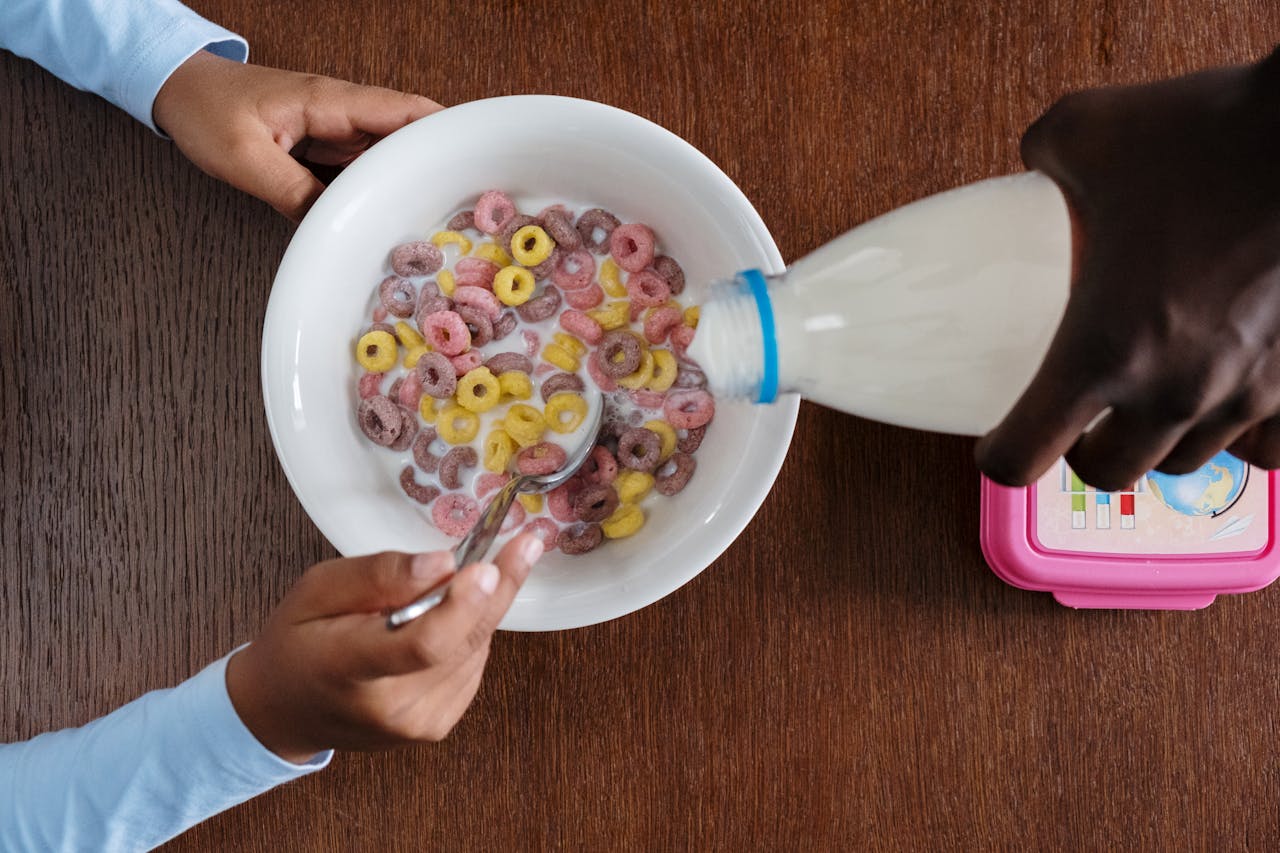
It’s not your imagination—your favorite groceries are getting smaller, but your bill keeps climbing. This trend, called “shrinkflation,” is everywhere. You grab a bag of chips or a box of cereal, and it looks the same, but there’s less inside. Meanwhile, the price tag either stays the same or goes up. For anyone trying to stick to a budget, this is a real problem. You end up paying more for less, and it’s easy to miss unless you’re paying close attention. Here’s what you need to know about shrinkflation and how it affects your grocery shopping.
1. Cereal Boxes
Cereal is a breakfast staple, but the boxes are shrinking. You might remember when a standard box was 18 ounces. Now, many are closer to 12 or 14 ounces, but the price hasn’t dropped. In some cases, it’s even higher. This means you’re getting fewer servings per box, and you’ll need to buy more often. To get the best value, check the price per ounce on the shelf tag. Store brands can sometimes offer more for less, so compare before you buy.
2. Potato Chips
Potato chips are a classic snack, but the bags are getting lighter. A “family size” bag used to be 16 ounces. Now, it’s often 12 or 13 ounces, but the price is the same or higher. The air in the bag isn’t just for cushioning—it’s also hiding the fact that you’re getting less product. If you want to save, look for sales or buy in bulk. You can also try making your own chips at home for a better deal.
3. Ice Cream
Ice cream containers have quietly shrunk from half-gallon (64 ounces) to 48 ounces or even less. The price, though, keeps rising. This means you’re paying more for every scoop. If you’re watching your budget, check the unit price and consider buying larger tubs or store brands. Sometimes, local or regional brands offer better value than the big names.
4. Toilet Paper
Toilet paper rolls are a classic example of shrinkflation. The rolls look the same, but there are fewer sheets per roll, and the sheets themselves are often smaller. You might not notice until you run out faster than usual. To get the most for your money, check the total square footage listed on the package. Buying in bulk can be beneficial, provided the price per square foot is lower.
5. Chocolate Bars
Chocolate bars have been shrinking for years. What used to be a standard 2-ounce bar is now often 1.4 ounces or less. The price, however, keeps going up. This is especially noticeable with popular brands. If you want to stretch your dollar, look for multi-packs or buy chocolate in bulk. You can also try store brands, which sometimes offer larger bars for less.
6. Yogurt Cups
Yogurt cups used to be 8 ounces. Now, many are 5.3 ounces or even smaller, but the price hasn’t dropped. This means you’re getting less protein and fewer calories per serving, but you’re still paying the same. To save, buy larger tubs and portion out servings yourself. This is usually cheaper and creates less packaging waste.
7. Orange Juice
Orange juice cartons have shrunk from 64 ounces to 59 ounces or less. The price, though, is often higher than ever. This means you’re getting fewer glasses per carton. If you want to save, look for sales or consider buying frozen concentrate, which can be more cost-effective. You can also try making your own juice if you have access to fresh oranges.
8. Laundry Detergent
Laundry detergent bottles look the same, but the amount of liquid inside has dropped. Some brands have also concentrated their formulas, so you use less per load. But the price per load can still be higher. Always check the number of loads listed on the bottle and compare the price per load. Sometimes, powder detergents offer better value than liquid.
9. Coffee
Coffee cans and bags have shrunk from 16 ounces to 12 ounces or less. The price, though, keeps rising. This means you’re paying more for every cup. To save, buy in bulk or look for sales. Grinding your own beans can also be cheaper than buying pre-ground coffee. If you drink a lot of coffee, consider a subscription service that offers discounts for regular deliveries.
10. Snack Crackers
Snack crackers, like cheese crackers or wheat crackers, have seen their box sizes shrink. What used to be a 16-ounce box is now often 12 or 13 ounces. The price, though, is the same or higher. To get the best value, check the price per ounce and look for store brands. Buying in bulk can also help, but only if you’ll use them before they go stale.
Why Shrinkflation Matters for Your Wallet
Shrinkflation isn’t just a minor annoyance—it affects your budget in real ways. You end up buying groceries more often, and your money doesn’t go as far. This trend is happening across many popular items, from cereal to toilet paper. Paying attention to package sizes and unit prices can help you spot shrinkflation and make smarter choices.
Have you noticed shrinkflation in your favorite products? Share your experiences or tips in the comments below.
Read More
10 Insanely Good Dollar General Coupon Deals You Can’t Afford to Miss
13 Money-Saving Travel Tips for Retired Couples
The post 10 Popular Items That Have Shrunk in Size but Gone Up in Price appeared first on Grocery Coupon Guide.







